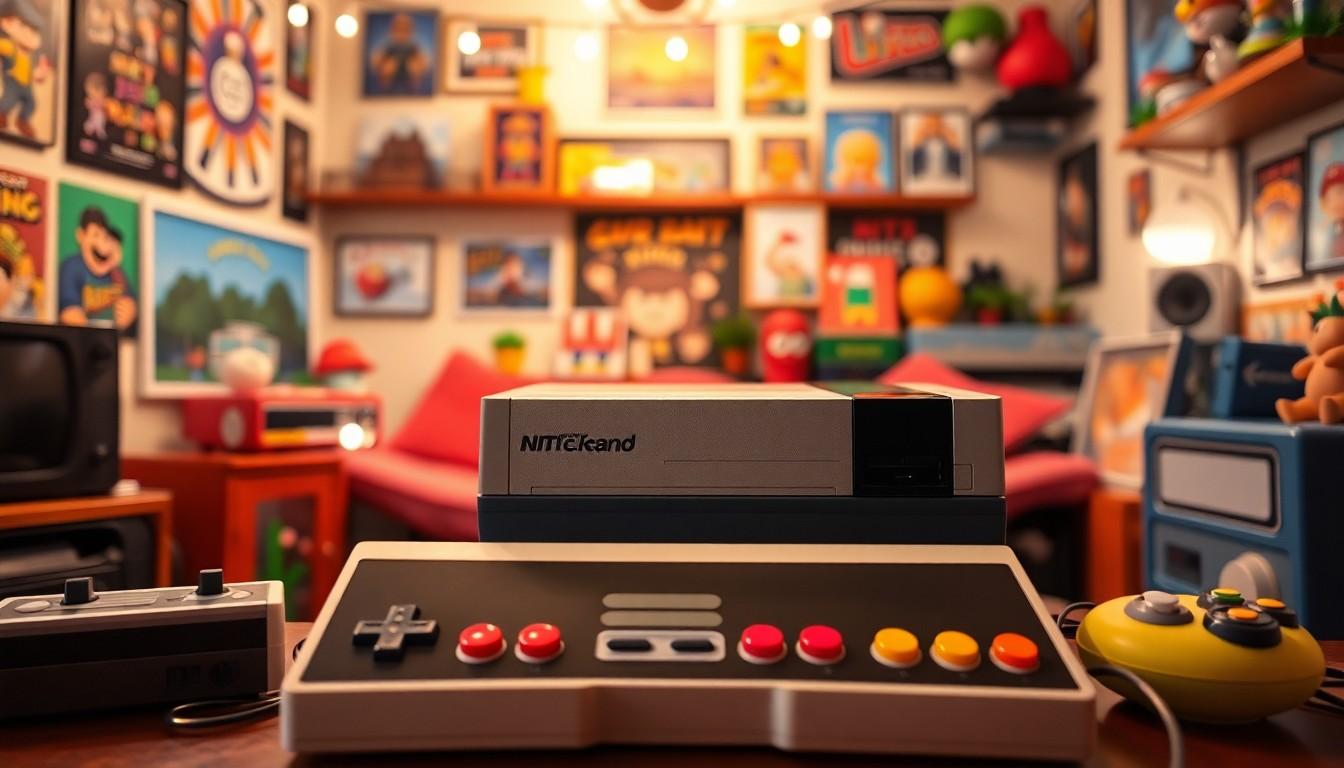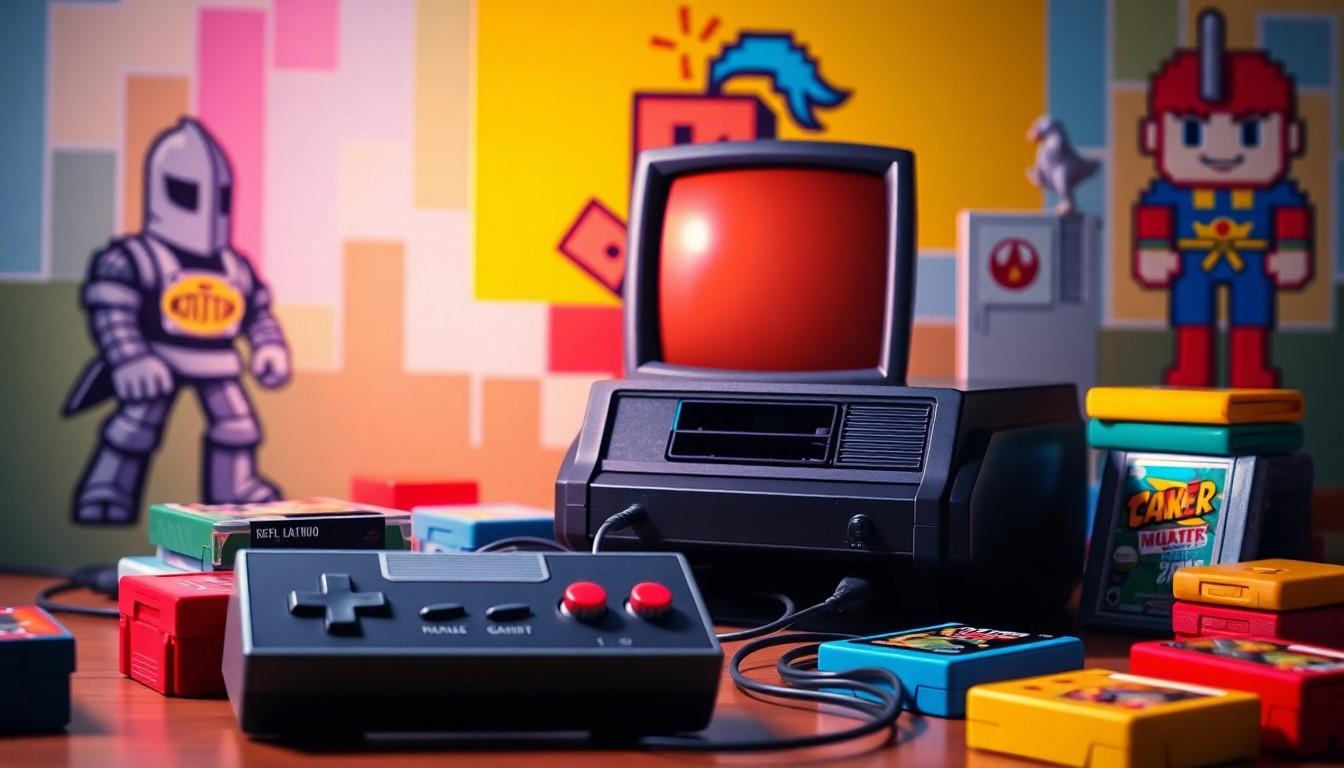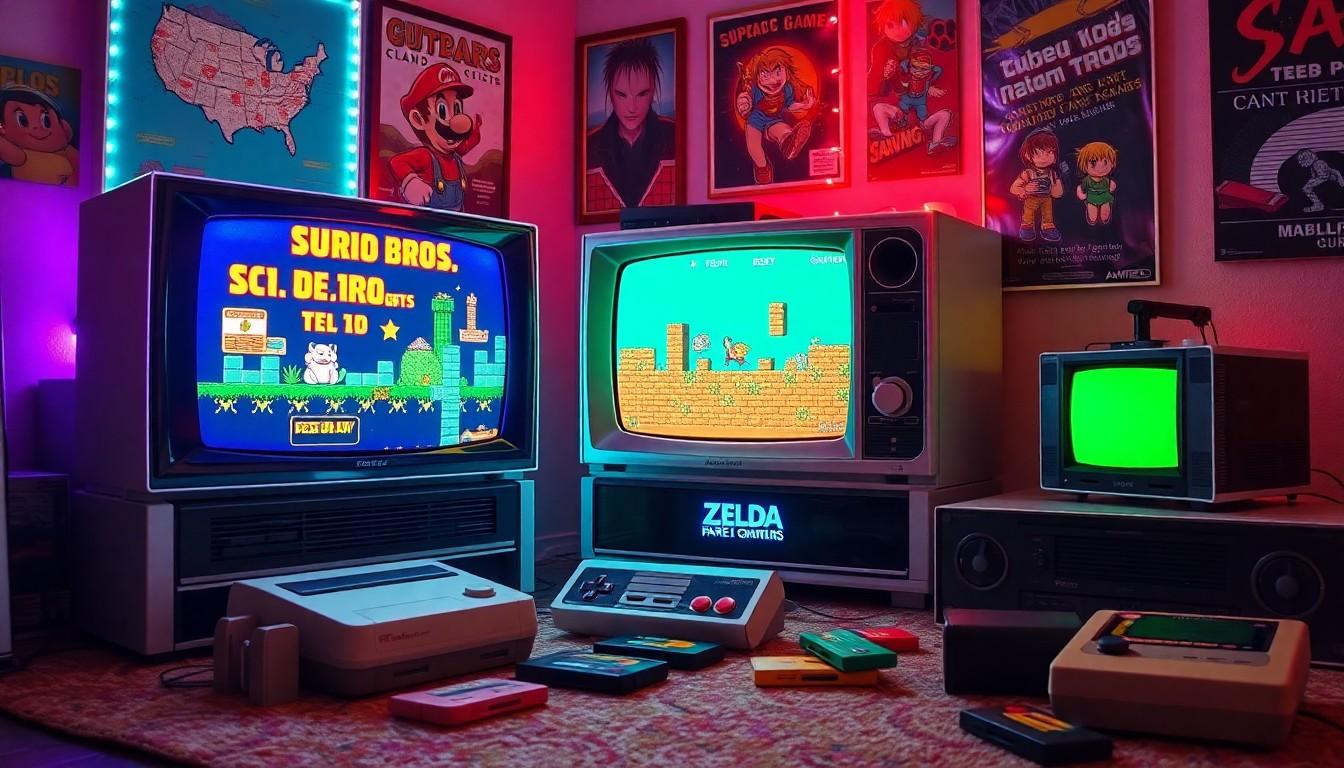The Best Fluffy Pancakes recipe you will fall in love with. Full of tips and tricks to help you make the best pancakes.

Retro Gaming Aesthetic: Why Nostalgia Fuels Today’s Gaming Craze
In a world dominated by sleek graphics and hyper-realistic gameplay, the retro gaming aesthetic stands out like a pixelated gem in a sea of high-definition visuals. It’s a nostalgic trip that whisks players back to simpler times when 8-bit graphics and chiptune soundtracks ruled the arcade. This aesthetic isn’t just a throwback; it’s a celebration of creativity, where limited resources birthed some of the most iconic games and unforgettable experiences.
Imagine the thrill of navigating through a pixelated landscape, dodging blocky enemies while jamming to catchy tunes that stick in your head like bubblegum on a summer sidewalk. Retro gaming isn’t just about reliving the past; it’s about embracing a unique style that’s both charming and immersive. So grab your controller and dust off that old console—it’s time to dive into the vibrant world of retro gaming aesthetics that’ll leave you laughing, reminiscing, and maybe even a little misty-eyed.
Overview of Retro Gaming Aesthetic
Retro gaming aesthetic embodies a distinct visual and auditory style rooted in the early days of video games. Characterized by vibrant 8-bit graphics, this aesthetic captivates enthusiasts with its simplicity and charm. Pixel art showcases creativity stemming from technological limitations, inviting players to appreciate the artistry behind each design.
Chiptune music, integral to retro gaming, complements the visuals, enhancing the gameplay experience. This sound, produced using simple synthesizers, evokes a sense of nostalgia that resonates with many. Recognizable melodies and catchy tunes serve to create memorable moments in gaming history.
Icons like the NES and Sega Genesis represent an era where gameplay focused on engagement rather than realism. Engaging level designs and challenging mechanics mark favorites among players. Titles from this period often emphasize storytelling through gameplay instead of extensive narratives, leading to compressed but engaging experiences.
Communities surrounding retro gaming flourish as players share their love for classic consoles and titles. Online forums, social media groups, and dedicated events foster connections based on shared memories. Collecting vintage games has become a popular pastime, with collectors seeking rare titles and unique memorabilia.
Every aspect of retro gaming aesthetic reflects a cultural phenomenon that transcends generations. Its impact on modern gaming is evident, as many contemporary designers draw inspiration from retro styles. The revival of retro-themed games connects younger players with gaming’s rich history while allowing nostalgic gamers to relive cherished experiences.
Key Characteristics of Retro Gaming Aesthetic

The retro gaming aesthetic stands out for its unique visual and auditory elements. Two main characteristics define this style: color palettes and design elements.
Color Palettes
Limited color palettes dominate retro gaming. Typically, these palettes feature bright, saturated hues, often derived from the constraints of early hardware. Games like “Super Mario Bros.” exemplify the use of primary colors to create engaging environments. Nostalgic players remember the distinct graphic styles that drew them in, fostering a sense of identity for different gaming eras. Many enthusiasts appreciate how these palettes evoke specific emotions and memories tied to the gaming experience.
Design Elements
Simplistic design elements characterize retro games. Designers relied on pixel art techniques, creating charming, blocky characters and environments. This pixelated approach prioritized gameplay mechanics over high-definition graphics. Iconic games, such as “The Legend of Zelda,” illustrate how clever design choices communicated story and function effectively. Patterns like grid-based layouts often guided character movement, enhancing player engagement. Basic animations provided a playful feel, ensuring that game worlds remained inviting and accessible to all players.
Impact of Retro Gaming Aesthetic on Modern Gaming
Retro gaming aesthetics significantly influence modern gaming, creating connections between past and present experiences. Nostalgic elements resonate with players, drawing them back to simpler times while innovating current game design.

Nostalgia Factor
Nostalgia plays a crucial role in retro gaming’s popularity. Players often reminisce about their childhoods, recalling experiences with classic consoles. The vibrant 8-bit graphics and catchy chiptune music evoke fond memories, establishing an emotional bond with the games. Familiarity with nostalgia invites seasoned gamers to revisit beloved titles, while younger players discover the charm of retro plays. Titles like “Pac-Man” and “Tetris” create shared experiences, offering comfort and a sense of belonging in gaming communities. Celebrating this nostalgia allows newer games to leverage retro-inspired styles, tapping into timeless aesthetics that captivate diverse audiences.
Influence on Game Design
Modern game design increasingly adopts retro-inspired elements. Pixel art techniques and limited color palettes reflect a desire to capture the essence of earlier gaming. Development teams prioritize engaging gameplay over hyper-realistic graphics, resulting in experiences that emphasize fun and creativity. Indie games frequently pioneer this trend, showcasing the blend of old and new through titles like “Celeste” and “Undertale.” Incorporating retro aesthetics encourages experimentation, often leading to unique storytelling and innovative mechanics. By embracing these classic influences, developers nurture an appreciation for gaming history while infusing fresh ideas into contemporary titles, creating a vibrant cross-generational landscape.
Popular Retro Games and Their Aesthetic
Retro gaming features a variety of iconic titles that continue to resonate with players today.
Iconic Titles
Games such as “Super Mario Bros.” and “The Legend of Zelda” stand out for their creativity and engaging gameplay. Both titles utilized simple graphics that have maintained their charm over decades. “Pac-Man” introduced intuitive mechanics that quickly became staples in gaming culture. “Tetris” showcased the power of straightforward puzzles paired with rhythmic gameplay, captivating millions. Each game reflects a specific era in gaming history, showcasing how developers prioritized user engagement over cutting-edge graphics. Collectively, these games have established a lasting impact, preserving their aesthetic appeal while inviting new generations to explore their worlds.
Visual Trends
Pixel art defines the visual style of many retro games, utilizing limited color palettes to evoke nostalgia. Bright, saturated hues characterize the design choices made during this era, fostering emotional connections with players. Simplistic backgrounds often draw attention to character animations, emphasizing movement and interaction. Many retro titles adopted 2D sprites, allowing creativity to flourish despite technological constraints. The iconic 8-bit and 16-bit styles emerged, becoming synonymous with the retro gaming aesthetic. These visual trends foster an inviting atmosphere, making games accessible to a wider audience and enhancing the overall gaming experience.
Future of Retro Gaming Aesthetic
The future of retro gaming aesthetic looks promising as nostalgia continues to shape player preferences. Emerging technologies influence how developers create retro-inspired games, driving innovation while preserving familiar elements. Gamers enjoy experiencing pixel art and chiptune music in modern contexts, creating a blend of old and new styles.
Indie games are at the forefront of this movement, with titles like “Celeste” and “Undertale” gaining popularity through traditional aesthetics. Every release highlights engaging gameplay while appealing to nostalgic sentiments. The blending of genres also introduces retro components to various gaming styles, making them more accessible for new audiences.
Creative collaborations between indie developers and classic franchises spark interest in retro aesthetics. Partnerships may revive beloved characters or settings, allowing established games to engage with fresh audiences. This approach enhances existing communities, encouraging players to connect through shared interests.
Technological advancements contribute to elevated retro experiences, such as improved emulators and remastered titles. Easier access to classic games drives interest and engagement among enthusiasts and newcomers alike. Online platforms make it convenient to share experiences while fostering a sense of community among fans.
Cultural influences impact future designs, with retro gaming aesthetics finding their way into mainstream gaming trends. Nostalgic elements in merchandise and marketing, alongside collaborations with established brands, capitalize on the enduring appeal. As retro aesthetics endure and evolve, they will likely continue influencing game design, creating unique and captivating experiences for players.
